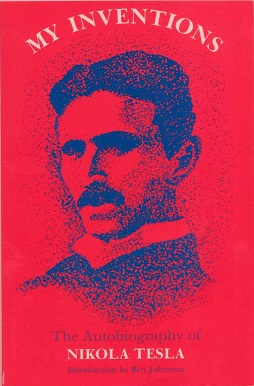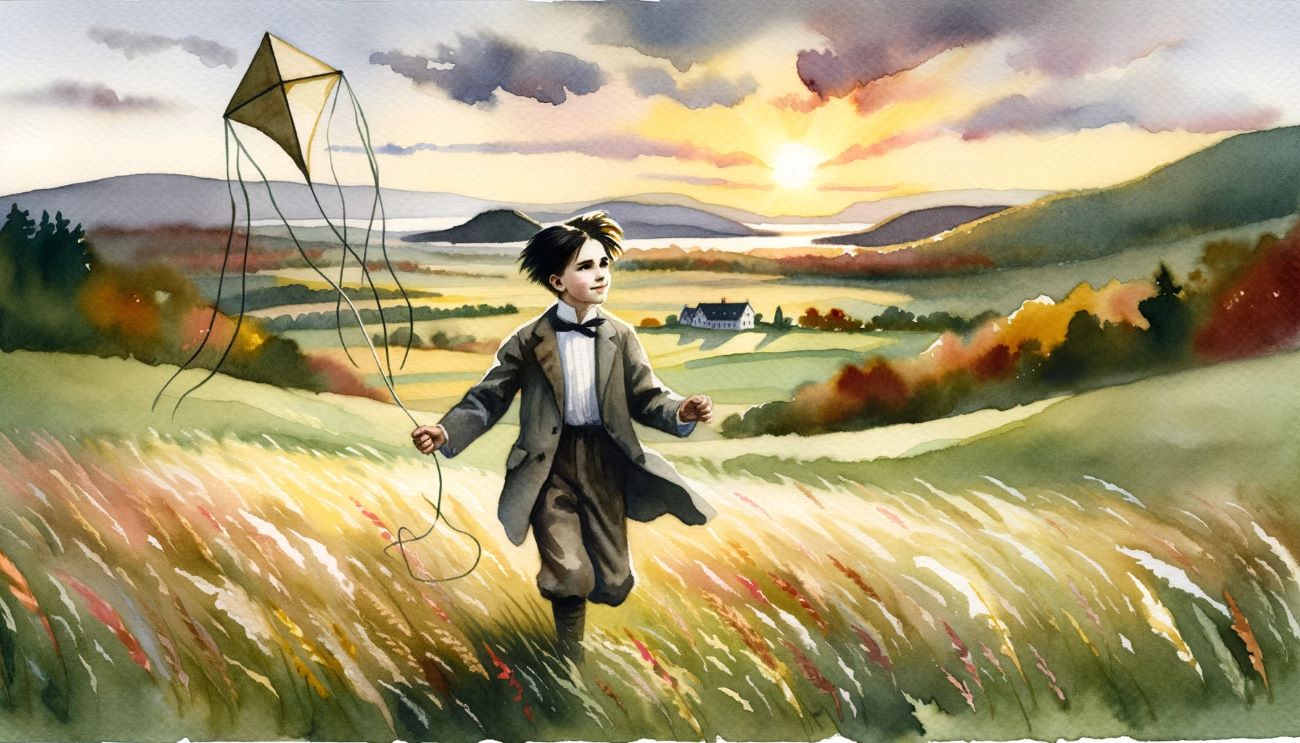Nikola Tesla, renowned inventor and engineer, was born on July 10, 1856, in the village of Smiljan, in the Austrian Empire, present-day Croatia. He was the fourth of five children in a Serbian Orthodox family. His father, Milutin Tesla, was a priest in the Serbian Orthodox Church, instilling a deep-rooted cultural and spiritual influence in Tesla’s early life. His mother, Đuka Mandić, though uneducated herself, was exceptionally intelligent and inventive, traits that Tesla admired and saw in himself. Despite the rural setting of his birthplace, Tesla’s formative years were rich with exposure to a variety of subjects, including literature, languages, and, most notably, science, setting the stage for his future extraordinary contributions.
The Youthful Spirit of Tesla’s “My Inventions”
The most intimate glimpse into the early years of Nikola Tesla’s life is encapsulated in his autobiography, “My Inventions,” initially published as a series of articles in 1919 in the “Electrical Experimenter” magazine. This work wasn’t merely a catalog of Tesla’s technical achievements and professional triumphs. Instead, inspired by the style and charm of Mark Twain’s writing, Tesla crafted his memoirs following the literary cues from timeless pieces such as “The Adventures of Tom Sawyer” and “The Adventures of Huckleberry Finn.” His narrative transcends the boundaries of a conventional autobiography, venturing into the realms of imagination and youthful adventure.

An Innovator from the Start: Nikola Tesla’s Early Creations
Tesla’s autobiography abounds with tales of his ceaseless inventiveness. He was perpetually devising new contraptions and contemplating scientific principles. One anecdote details his construction of a rudimentary engine powered by June bugs, evidencing his ingenuity and possibly foreshadowing his later revolutionary inventions. These narratives underscore not just his technical prowess but his unbridled imagination, both of which became trademarks of his illustrious career.
Heroic Endeavors: Tesla and the Firefighters’ Pump
A particular incident stands out in Tesla’s youth, showcasing not just his courage but also his presence of mind and willingness to act in a crisis. During a firefighting demonstration in Gospić, spectators were aghast when the pump supplying water from the river malfunctioned, a potentially disastrous setback in an actual emergency. The young Tesla, without hesitation, took the initiative to dive into the river, locating the obstruction that plagued the pump intake at the river’s bottom. With audacity and resolve, he dislodged the blockage, restoring the vital water flow to the cheers of the relieved onlookers.
This act of quick thinking and bravery earned him the admiration of the entire town. While this episode, like many in Tesla’s autobiographical accounts, embodies the spirit of adventure and resourcefulness found in literary works like those of Mark Twain, it also speaks to the real-life ingenuity and daring that would characterize Tesla’s later career and monumental inventions. Such anecdotes, blending the factual with the flavorful, paint a rich portrait of Tesla as not just an inventor, but a man of action and, indeed, a figure capable of capturing the popular imagination much like the legendary characters in his favorite stories.
The Power of Visualization: Tesla’s “Living” Imagination
Among Tesla’s most remarkable self-described abilities was his potent power of visualization. He had a kind of synesthesia or sensory merging that allowed him to project his inventions in meticulous detail in his mind’s eye, often so realistically that it was indistinguishable from actuality. This cognitive strength wasn’t just instrumental in his inventive work but also a constant throughout his life, providing a vibrant inner realm that he could access, nurturing his unmatched creativity.
Invisible Helper: Mysterious Rescuing Forces
Tesla frequently spoke of an “invisible hand” that seemed to save him in life-threatening situations. He recounts a childhood episode where he nearly drowned attempting to swim under a raft in a river, only to be mysteriously pushed to the surface. In another alarming event, he was left hanging precariously over a waterwheel, when this unseen force intervened once more, steering him to safety. Whether these mystical experiences were due to divine intervention or sheer fortuity, they deeply impacted Tesla’s perception of the world and likely influenced his scientific pursuits, fueling his enduring quest to decode the concealed forces of the universe.
The Gamble: Tesla’s Confession of a Youthful Vice
In his autobiography, “My Inventions,” Nikola Tesla unveils a lesser-known aspect of his early life, a stark contrast to his later disciplined scientific pursuits: his penchant for gambling. This indulgence began while he was still under his parents’ roof, drawn to the thrill of card games. Despite his father’s dismay, young Tesla reveled in the game, confident in his ability to quit at will but choosing not to, ensnared by the enjoyment it procured. However, the gravity of this vice didn’t dawn on him until he faced a profound loss, squandering every penny he had.
Confronted by his concerned mother, who handed him her last savings, her words — effectively, “Use it all up quickly, and you’ll stop sooner” — resonated deeply with Tesla, prompting an immediate and lasting change. This pivotal moment, detailed with remarkable candor, not only humanizes the legendary inventor but also highlights his profound capacity for self-reflection and personal transformation, attributes that played a significant role in his groundbreaking explorations of science and technology.
While “My Inventions” is a rich source of information about Tesla’s life, it’s essential to approach it with an understanding that autobiographical works, especially those written by inventors and showmen like Tesla, might contain embellished or metaphorical accounts for narrative enhancement. Always cross-referencing with other historical sources or biographies is advisable for the most accurate picture of Tesla’s life. In conclusion, we highly recommend delving into Tesla’s memoirs yourself, allowing you to experience his adventures firsthand. You won’t be disappointed.
Historical Challenge: Can You Conquer the Past?
Answer more than 18 questions correctly, and you will win a copy of History Chronicles Magazine Vol 1! Take our interactive history quiz now and put your knowledge to the test!

